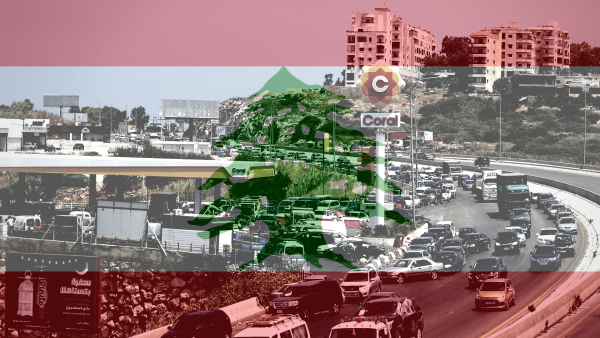Discussing the different facets that constitute the Lebanese severe economic crisis is increasingly getting more complicated, as the local currency continues to plunge to historic highs in comparison to the US dollar, throwing millions of people under the poverty line and causing distress to almost every Lebanese person.
Lebanese protesters tried to storm central bank offices in two major cities, state media reports, after the national currency plunged to a new record low on the black market.https://t.co/0AKQZB5rHZ
— Al Arabiya English (@AlArabiya_Eng) June 27, 2021
Even though the Lebanese economy has always been based on services including financial and tourism sectors, the country's current situation points at the third worst economic crisis since the 1850s, says the World Bank.
The crisis started in the fall of 2019 when Lebanese people protested a new tax package that coincided with an unprecedented shortage of US dollars in the Central Bank. Since then, the Lebanese lira's exchange rate has risen from $1,500 to a whopping more than $18,000, slashing people's salaries and making it hard for them to purchase essential products. The crisis has also affected inflation, poverty rates, and overall GDP in the country.
In addition to the falling lira's value, more than 40% of the country's population has slipped under the poverty line, with more than 20% being unable to afford basic needs, making only about $4 a day. Severely poor Lebanese people were only about 8% of the population in 2019.
Thanks @_HadleyGamble for having me on to discuss last week’s @TRF_Stories investigation uncovering at least $250m in UN aid lost to Lebanese banks#Lebanon’s crisis is getting worse by the day & every single cent of aid needs to get to those who need it
— Timour Azhari (@timourazhari) June 21, 2021
pic.twitter.com/3MBPxPAdze
Even though protests targeted corrupt politicians blaming the deteriorating economy on their policies, the Beruit port blast that hit the capital city in August 2020 had a devastating long-lasting impact on the country's economy.
In 2020, the Lebanese economy has shrunk by more than 20% and it is expected to shrink by about 10% in 2021. This includes a rise in remittances sent by Lebanese expats from abroad, which reached up to $7 billion during 2020, making about 32% of the local GDP.
Over the last several months, international retail brands have left Lebanon for good after more than half of the population has lost the ability to purchase their products. Essential needs such as wheat, fuel, and medicines are still subsided by the government, even though prices of fuel will see gradual rises in the coming weeks after a government decision meant to face shortages.
For the past two weeks, different parts of Lebanon have been living through a growing fuel crisis, especially after reports of "cartels" smuggling it into Syria to make more profit than they can in the troubled country.
Without a comprehensive rescue plan that addresses the different reasons for the crisis, shortages in Lebanon will not be limited to fuel, products, and dollars only, but will also extend to the country's most educated and skilled people, who are migrating in record numbers, searching for better lives. In recent weeks, the medical sector has reported losing thousands of its workforce, including doctors, nurses, pharmacists, and paramedics who have been able to find jobs away from Lebanon.
Workers' unions have also been warning that this wave of immigration might cost Lebanon even more expensive losses than the ones suffered during the current crisis, as the country will be deprived of much-needed skills.
Nowadays, tensions are extremely worrying in Lebanon, especially that experts are afraid that the acute consequences of the crisis might end up in violent protests and even worse; nationwide chaos.
How do you think can the Lebanese economy by supported in the face of these stats?









